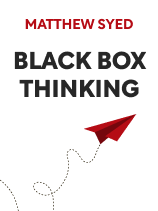

This article is an excerpt from the Shortform book guide to "Black Box Thinking" by Matthew Syed. Shortform has the world's best summaries and analyses of books you should be reading.
Like this article? Sign up for a free trial here .
What is a cognitive distortion? How can humans combat cognitive distortions to handle situations effectively?
A cognitive distortion is an unconscious mental distortion of facts that may come into play for a number of reasons. In the book Black box Thinking, the author discusses how cognitive distortion is a mechanism that we use when we fail to accept and learn from our mistakes.
Read on to discover: what is a cognitive distortion?
We Commit Cognitive Distortions
What is a cognitive distortion and where does it originate from? When a story turns out to be more complex than we thought, cognitive dissonance—unconscious mental distortion of the facts—comes into play.
As Syed explains, nobody likes to be wrong—it’s a threat to our egos. So to defend our versions of events, our brains distort the information to conform to our beliefs. And the more invested we are, the worse the distortions. What is a cognitive distortion? A cognitive distortion is a natural reaction and has been around for decades.
(Shortform note: The notion of cognitive dissonance originates from a 1957 theory described by Leon Festinger, who claimed that we have an innate drive to maintain harmony between our attitudes (thoughts, beliefs) and behaviors. What is a cognitive distortion helping us to gain? When we face any decision, every option has pros and cons, so we’ll always lose out on something—for example, accepting a job with great pay but a boring office in an average town. This causes dissonance, which we tend to overcome by rationalizing: “It isn’t so bad, really.” While this may seem irrational, it creates cognitive consistency, which is rational in that it reduces the anxiety of dissonance and helps you get on with your life.)
What is a cognitive distortion example from the real world? Syed explains that we’re all prone to three types of cognitive dissonance. We’ll illustrate each type with examples of real-world incidents surrounding Chogyam Trungpa Rinpoche, the spiritual leader of Shambhala International (a Buddhist organization) who faced controversy related to substance use and sexual abuses:
- We reframe the evidence. In other words, we accept a piece of evidence but tell a story to conform it to our beliefs. For example, Rinpoche’s accusers cited stories of sexual abuse from ex-devotees, but devout followers answered that his sexual abuses were spiritual lessons, and his victims just weren’t ready to learn.
- We invent justifications. Here, we accept the evidence but find some way to excuse it. So a devout follower might justify Rinpoche’s “seven spiritual wives” by saying that he earned it with his spiritual dedication.
- We ignore the facts outright. Sometimes, cognitive dissonance causes point-blank denial of the facts. After Rinpoche died of liver poisoning from his drinking problem, followers propped his body into a sitting meditation position and proclaimed that he’d reached parinirvana (enlightenment after death), as if his failings had never happened.
| How to Combat Cognitive Dissonance Though cognitive dissonance often occurs automatically, we can learn to recognize it. According to psychologists, there are various signs of cognitive dissonance: 1. Feeling discomfort prior to making an important decision may indicate conflicting beliefs, a form of dissonance. 2. Excessive justification or qualification of a decision can indicate that you know it wasn’t quite right. 3. Doing something while hiding it from others, like smoking in a private place, indicates dissonance between your desire to improve and your existing habit. At this point, you should be able to answer the question: what is a cognitive distortion? Now, we can learn how to combat it. The best way to resolve cognitive dissonance is to honestly examine and adjust your beliefs. While this is difficult, our only other options are to rationalize or ignore the conflicting information, which doesn’t help. To examine your beliefs, try using mindfulness meditation to develop space between your reception and response to new information. This allows you to observe and change your actions, instead of simply reacting from habit. |

———End of Preview———
Like what you just read? Read the rest of the world's best book summary and analysis of Matthew Syed's "Black Box Thinking" at Shortform .
Here's what you'll find in our full Black Box Thinking summary :
- How an organization’s culture and systems either promote or prevent learning
- The steps for learning from failure in our complex world
- How to shift mindsets around failure to promote a learning-oriented institution






